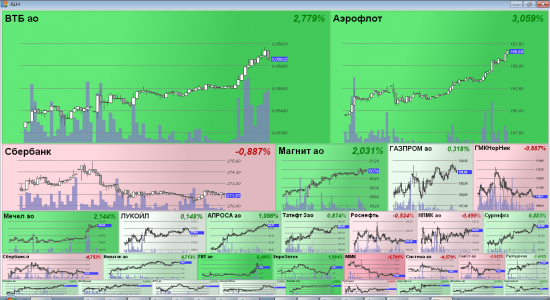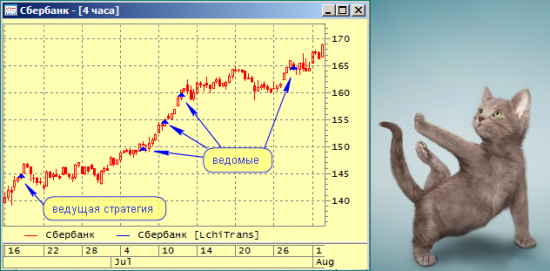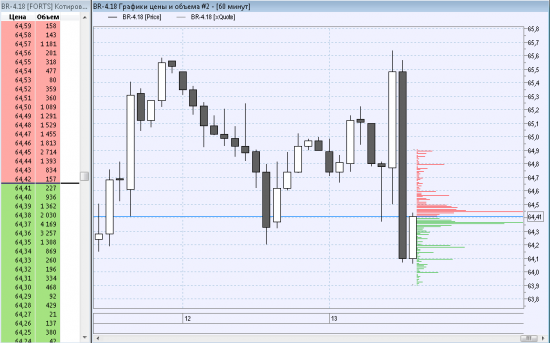SMART-LAB
Новый дизайн
Мы делаем деньги на бирже
lua
Здравствуйте, кто сталкивался с такой проблемой? https://gyazo.com/39ddc28908347127a865dcd7f7f37e78 пишет что заявка была исполнена, но ничего не куплено, в портфеле пишет что заявка снята.
- 23 мая 2018, 11:37
- |
- ответить
- 526
- Ответы ( 7 )
LUA:Здравствуйте подскажите как получить баланс цену? https://i.gyazo.com/ef16679461d1c0be24291d9d8d6b0245.png как получить цену последней сделки у меня есть код, НО а что если я докупился?
- 16 мая 2018, 17:17
- |
- ответить
- 781 |
- Ответы ( 1 )
В связи с блокировкой telergam.Подскажите идею оповещалки для бота на lua.
- 18 апреля 2018, 11:59
- |
В связи с блокировкой telergam.
Подскажите идею оповещалки для бота на lua.
СМС оповещение у меня сделано через свой модем,
но хочется что-нибудь халявное как с telegram.
Подскажите идею оповещалки для бота на lua.
СМС оповещение у меня сделано через свой модем,
но хочется что-нибудь халявное как с telegram.
TreeMap для QUIK
- 09 марта 2018, 14:43
- |
Небольшая TreeMap-приблуда/скрипт для квика.
Назвал (простите за spanglish) - All Liquidity of Hour

( Читать дальше )
Назвал (простите за spanglish) - All Liquidity of Hour

( Читать дальше )
(QUIK Lua) Здравствуйте, я знаю что вас задолбали такие как я) но прошу помочь с кодом, конкретно нужен код для получения цены открытой позиции,цена нужна для выставления точного стоп ордера. Спасибо
- 14 февраля 2018, 13:39
- |
- ответить
- 1.6К |
- Ответы ( 11 )
Установка индикаторов Квик
- 20 января 2018, 20:15
- |
Друзья, добрый вечер! Подскажите каким образом установить в Квик 7.14.1.7 пользовательские индикаторы (.lua)?
- bitcoin
- brent
- eurusd
- forex
- gbpusd
- gold
- imoex
- ipo
- nyse
- rts
- s&p500
- si
- usdrub
- акции
- алготрейдинг
- алроса
- аналитика
- аэрофлот
- банки
- биржа
- биткоин
- брокеры
- валюта
- вдо
- волновая разметка
- волновой анализ
- вопрос
- втб
- газ
- газпром
- гмк норникель
- дивиденды
- доллар
- доллар рубль
- дональд трамп
- евро
- золото
- инвестиции
- инвестиции в недвижимость
- индекс мб
- инфляция
- китай
- ключевая ставка цб рф
- кризис
- криптовалюта
- лукойл
- магнит
- ммвб
- мобильный пост
- мосбиржа
- московская биржа
- мтс
- натуральный газ
- нефть
- новатэк
- новости
- обзор рынка
- облигации
- опрос
- опционы
- отчеты мсфо
- офз
- оффтоп
- прогноз
- прогноз по акциям
- путин
- раскрытие информации
- ри
- роснефть
- россия
- ртс
- рубль
- рынки
- рынок
- санкции
- сбер
- сбербанк
- северсталь
- смартлаб
- сущфакты
- сша
- технический анализ
- торговля
- торговые роботы
- торговые сигналы
- трамп
- трейдинг
- украина
- фондовый рынок
- форекс
- фрс
- фьючерс
- фьючерс mix
- фьючерс ртс
- фьючерсы
- цб
- цб рф
- экономика
- юмор
- яндекс


















 Новости тг-канал
Новости тг-канал


